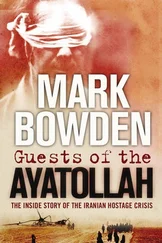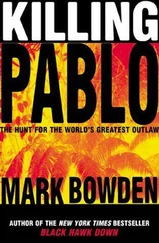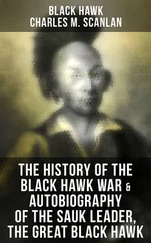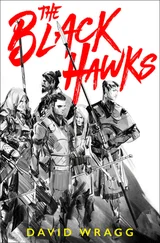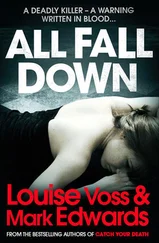Mark Bowden - Black Hawk Down
Здесь есть возможность читать онлайн «Mark Bowden - Black Hawk Down» весь текст электронной книги совершенно бесплатно (целиком полную версию без сокращений). В некоторых случаях можно слушать аудио, скачать через торрент в формате fb2 и присутствует краткое содержание. Город: New York, Год выпуска: 1999, ISBN: 1999, Издательство: Atlantic Monthly Press, Жанр: nonf_military, на английском языке. Описание произведения, (предисловие) а так же отзывы посетителей доступны на портале библиотеки ЛибКат.
- Название:Black Hawk Down
- Автор:
- Издательство:Atlantic Monthly Press
- Жанр:
- Год:1999
- Город:New York
- ISBN:978-0871137388
- Рейтинг книги:3 / 5. Голосов: 1
-
Избранное:Добавить в избранное
- Отзывы:
-
Ваша оценка:
- 60
- 1
- 2
- 3
- 4
- 5
Black Hawk Down: краткое содержание, описание и аннотация
Предлагаем к чтению аннотацию, описание, краткое содержание или предисловие (зависит от того, что написал сам автор книги «Black Hawk Down»). Если вы не нашли необходимую информацию о книге — напишите в комментариях, мы постараемся отыскать её.
Black Hawk Down — читать онлайн бесплатно полную книгу (весь текст) целиком
Ниже представлен текст книги, разбитый по страницам. Система сохранения места последней прочитанной страницы, позволяет с удобством читать онлайн бесплатно книгу «Black Hawk Down», без необходимости каждый раз заново искать на чём Вы остановились. Поставьте закладку, и сможете в любой момент перейти на страницу, на которой закончили чтение.
Интервал:
Закладка:
Lost and wandering in Mogadishu’s confusing alleyways, they badly needed guidance. They were directed by officers watching from above on video screens, Col. Harrell in the command bird at 3,000 feet, and U.S. Navy pilots in a P-3 Orion spy plane about 1,000 feet higher than the helicopters.
Before they could carry out their revised orders, Mike Durant’s Blackhawk was shot down about a mile south of the convoy. The orders changed again. Now they were told to continue as planned to the Wolcott crash site. But after that they were to load up the soldiers who had rushed to Wolcott’s aid, and then fight their way to the Durant site a mile away.
But the convoy itself needed help. To an extent the commanders didn’t realize from watching on their screens above, the men in the vehicles were getting hammered.
Othic had been one of the first men hit. It happened just after he had seen an RPG launched from a crowd of Somalis. He watched the grenade explode on one of the five-tons, disabling it and mangling the legs of Staff Sgt. Dave Wilson, who had been standing alongside.
Othic had just turned to fire on the crowd when he heard a loud crack. It felt as if a baseball bat had whacked his right arm. A round had splintered the forearm. In a few blinding moments of pain he just went “cyclic” on the big gun, firing it on automatic, sweeping the street behind the convoy until Sgt. Lorenzo Ruiz stepped up to take the gun.
Othic wasn’t the only casualty. Sgt. First Class Bob Gallagher had been shot in the arm. Sgt. Bill Powell had been shot in the meaty part of his calf. In the back of one truck, Wilson held his weapon on the prisoners and propped up his mangled legs.
There weren’t enough vehicles to carry all four Chalk teams and the Commando guys from the target house. Three vehicles had been dispatched earlier to return an injured Ranger to the main base. Some of the soldiers were able now to jump on the remaining vehicles, but the others had to move out on foot.
The trucks had big, fluorescent-orange panels on top to help the surveillance birds keep an eye on them. The helicopters were the troops’ eyes in the sky, guiding them through the maze. If everything went well—the 20-man convoy and ground units linking up at the Wolcott crash site with all the Rangers and Commando teams already there—there would be nearly 120 men to rescue the two downed crews and then fight their way out of the hornet’s nest.
Othic stretched out on his belly in back of the second-to-last humvee, which had its slope-backed hatch open so he and the others crammed in there could shoot out the back. He had a field dressing on his right arm, and he was using his left arm to shoot his M-16. He was a crack shot. An avid hunter from Holt, Mo., Othic had grown up with guns. The Rangers had nicknamed him “Little Hunter,” for he was the smallest man in the unit.
Next to Othic, Sgt. Ruiz was working the .50-cal steadily. The big gun’s recoil gently rocked the wide vehicle, which was comforting.
They started off following the soldiers who were on foot, but the helicopters steered them along a different route. A few turns later they found themselves right back where they had been minutes earlier. And that spot was just a few blocks north of the target house, where they had loaded up their prisoners as the mission began an hour earlier.
There they came upon Staff Sgt. Matt Eversmann, whose Chalk Four had been pinned down since the mission began. When a Ranger captain had ordered Eversmann to move his Chalk to Wolcott’s crash site on foot, the sergeant had said, “Roger,” but to himself had said facetiously, Right. His men were badly shot up. He had only about four or five still able to fight out of the original Chalk of about a dozen soldiers.
Eversmann was relieved to see the convoy approach. He spotted his buddy Sgt. Mike Pringle, a tiny guy, so low in the turret of the lead humvee that he was actually peering out from underneath the .50-cal. It brought a smile to Eversmann’s face despite his ordeal.
Eversmann loaded his bloodied men on the crowded vehicles, piling them on top of other guys. As he stood there taking a final mental count of his men, the column started moving. Eversmann had to make a running leap on the back of a humvee. He landed on top of somebody, and found himself flat on his back, looking up at the sky, realizing what a terrific target he was and that he couldn’t even return fire. As helpless as he felt, he was relieved to be back with the others, and moving. If they were together and rolling, it meant the end was near. Wolcott’s crash site was just blocks away.
Up ahead, in the second truck, Othic’s buddy, Spec. Eric Spalding, was firing away steadily with his M-16. He was amazed at the ferocity of the Somalian attacks. There were people with guns in alleyways, at windows, on rooftops. Each time his M-16 magazine was used up, Spalding shot with his 9mm Berretta pistol while he replaced the rifle magazine with his free hand.
As they crossed one alley, a woman in a flowing purple robe darted past on the driver’s side of the truck. The driver had his pistol resting on his left arm, and he was shooting at whatever moved.
“Don’t shoot,” Spalding shouted at him. “She’s got a kid!”
At that moment the woman turned. Holding a baby on one arm, she raised a pistol with her free hand. Spalding shot her where she stood. He shot four more rounds into her before she fell. He hoped he hadn’t hit the baby. They were moving fast, and he didn’t get to see whether he had. He thought he probably had hit the baby. She had been carrying the infant on her arm, right in front. Why would a mother do something like that with a kid on her arm? What was she thinking?
CHAPTER 12
Left, Right, Left—Lost and Bloody
November 27, 1997
IN ORDINARY circumstances, as close to Cliff Wolcott’s crash site as they were, the convoy would have just barreled over to it, running over and shooting through anything in its path. But with the surveillance helicopters and P-3 Orion spy plane overhead, the convoy was about to illustrate how too much information can hurt soldiers on a battlefield.
From above, commanders could see Somalis throwing up roadblocks and preparing ambushes in Mogadishu. A group of about 15 gunmen was running along streets parallel to the convoy, keeping up because the two five-ton trucks and six humvees were stopping and then darting across intersections one at a time. This gave the gunmen time to get to the next street and set up to fire at each vehicle as it came through.
The men in the vehicles had been ordered to fight their way to Wolcott’s crash site, help rescue the crew, then get over to pilot Mike Durant’s crash site about a mile south. But the convoy couldn’t get anywhere because it was lost—and getting riddled.
The choppers and the spy plane, flown by U.S. Navy aviators, tried to steer the convoy clear of Somalian gunfire, dodging the soldiers left and right on the labyrinthine streets. It was like negotiating a maze. But the Orion pilots were handicapped. They were not allowed to communicate directly with the convoy. Their orders were to relay all communications to the Joint Operations Center (JOC) back at the beach. So when the Orion pilots said, “Turn left,” that message went first to the JOC and then to the convoy. The pilots watched with frustration as the convoy drove past the place they had directed it to turn, then, getting the delayed message, turned left down the wrong street.
There was another problem. Watching on screens, the commanders weren’t hearing the pop of bullets and feeling the bone-rattling, lung-sucking blast of grenades. The convoy’s progress seemed orderly. The video images were’t conveying how desperate the situation was.
Читать дальшеИнтервал:
Закладка:
Похожие книги на «Black Hawk Down»
Представляем Вашему вниманию похожие книги на «Black Hawk Down» списком для выбора. Мы отобрали схожую по названию и смыслу литературу в надежде предоставить читателям больше вариантов отыскать новые, интересные, ещё непрочитанные произведения.
Обсуждение, отзывы о книге «Black Hawk Down» и просто собственные мнения читателей. Оставьте ваши комментарии, напишите, что Вы думаете о произведении, его смысле или главных героях. Укажите что конкретно понравилось, а что нет, и почему Вы так считаете.






